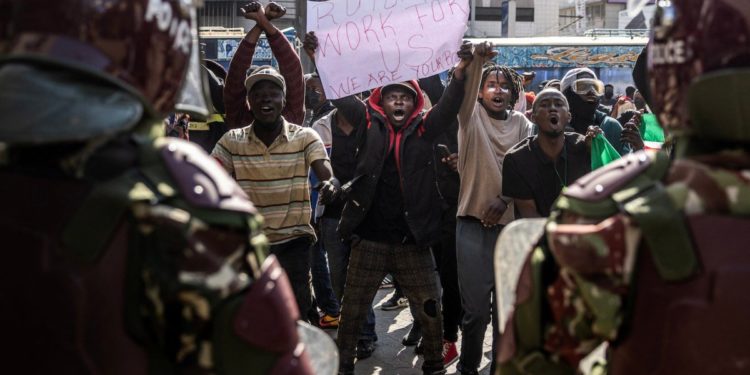In recent weeks, Kenya has witnessed a powerful wave of protests driven by a united, tech-savvy generation. These demonstrations, sparked by the controversial Finance Bill 2024, have showcased the remarkable organizational prowess and unity of Gen Z.
This cohort has successfully mobilized across the country without traditional leaders or tribal affiliations, relying instead on the connective power of technology and social media.
The Finance Bill 2024, which proposed significant tax hikes, ignited widespread discontent among Kenyans. The bill has since been recalled, but the protests it sparked have evolved into a broader movement, highlighting systemic issues within the government and law enforcement.
At the forefront of this movement is Gen Z, whose digital fluency and unity have breathed new life into Kenya’s protest culture.
Unlike previous protest movements in Kenya, the recent demonstrations have been notably leaderless and tribeless. Gen Z protesters have avoided traditional hierarchies and ethnic divisions, coming together as a unified force. This unity has been facilitated by social media platforms such as X, Tiktok, Instagram, and WhatsApp, where young Kenyans have convened, shared opinions, and organized protests with remarkable efficiency.
Hashtags like #RejectFinanceBill and #RutoMustGo have trended nationally, amplifying the voices of protesters and drawing international attention to their cause. Through twitter spaces, live streams, tweets, and posts, Gen Z has documented police brutality, coordinated protest locations, and provided real-time updates to participants. This use of technology has not only ensured widespread participation but also maintained the momentum of the movement.
One of the most striking features of these protests is their tribeless nature. Kenya has a history of ethnic divisions influencing politics and protests, but Gen Z has transcended these barriers. The protesters are united by a common cause rather than tribal loyalties, reflecting a generational shift towards a more inclusive and cohesive society.
The leaderless structure of the protests has also been a defining characteristic. Without a single figurehead, the movement has been more resilient and less susceptible to manipulation or suppression. Decisions are made collectively, phrases such as “retweet if you’ll be there or like if you support this” have been very prevalent. This ensured that the movement remained democratic and reflective of the will of its participants.
The success of Gen Z in organizing these protests marks a new era of activism in Kenya. This generation has harnessed the power of digital tools to bypass traditional barriers to mobilization. Their ability to coordinate large-scale demonstrations without centralized leadership or tribal divisions reflects the transformative potential of technology in social movements.
Moreover, the protests have highlighted the broader issues of police brutality and governance in Kenya. The use of excessive force by law enforcement against peaceful protesters has drawn sharp criticism from human rights organizations and the international community. The digital documentation of these abuses has been crucial in holding authorities accountable and pressuring the government to address the concerns of its citizens. It is worth marveling at that just by a picture, the Gen Z’s were able to dig and find more details, personal and otherwise on the killer cop who took one Rex Masai’s life during the protests.
This generation has already demonstrated that it can overcome traditional divisions and leverage technology to effect change. Their actions have set a precedent for future activism in Kenya, showing that a leaderless, tribeless, and digitally connected movement can indeed drive a revolution.


















